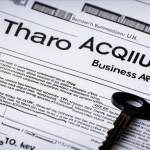Overview of Business Structures in the UK
Understanding the business structure options is crucial for anyone starting a business in the UK. The three primary legal structures UK entrepreneurs encounter are sole trader, partnership, and limited company. Each has distinct characteristics, advantages, and challenges.
A sole trader is the simplest structure, where one individual owns and operates the business. This setup offers full control but comes with unlimited personal liability. It is ideal for small, low-risk ventures and startups. On the other hand, a partnership involves two or more individuals sharing ownership and responsibilities. Partnerships share profits and liabilities, which can be unlimited unless structured as a limited liability partnership (LLP). This structure suits businesses where multiple people want active involvement.
Also to read : How Can You Leverage Legal Structures for Optimizing UK Business Formation?
A limited company is a separate legal entity, limiting owners’ personal liability to their investment. Though setting up and maintaining a limited company involves more administrative work and compliance than the other two structures, it offers tax advantages and credibility. This structure is often preferred by businesses planning growth or seeking external investment.
Choosing the right structure depends on factors like risk tolerance, desired control, and future business ambitions.
Have you seen this : What Are the Main Challenges in Starting a Business in the UK Today?
Key Factors That Influence Business Structure Choice
Choosing the right UK business structure depends heavily on several influencing factors. First, liability is a core consideration. Structures like a sole trader expose owners to unlimited personal liability, making them riskier for high-liability ventures. In contrast, a limited company limits personal liability to the amount invested, offering protection for personal assets.
Taxation also plays a crucial role. Different business structure options face varying tax obligations. For example, sole traders pay income tax on profits, while limited companies pay corporation tax, often resulting in potential tax savings. Partnerships’ tax profiles can vary based on their setup, making it important to evaluate tax benefits specific to each structure.
Administrative demands and compliance obligations differ markedly. Sole traders have minimal reporting requirements, making this option attractive for simplicity. Partnerships require some record-keeping, while limited companies face stricter UK legal compliance, including annual filings and accounting standards.
Understanding these decision criteria upfront helps entrepreneurs select a structure aligned with liability tolerance, tax efficiency, and administrative capacity—key factors essential to sustainable business operation.
Funding, Growth, and Long-Term Business Plans
When considering business growth and funding, the choice of business structure options significantly impacts future potential. For example, a limited company offers easier access to capital. Because it is a separate legal entity, investors are more likely to commit funds. This makes it ideal for entrepreneurs who plan long-term scalability and expect external investment.
In contrast, sole traders and partnerships typically rely more on personal funds or loans. Their structures limit access to venture capital or large-scale financing, which can constrain expansion opportunities. However, partnerships can pool resources among members, supporting moderate growth.
Planning ahead is essential: if you expect your business to evolve or change size, choosing a flexible structure is critical. Limited companies allow issuing shares, attracting investors, and transitioning from small to large operations more smoothly than other legal structures UK.
Moreover, adapting a business’s legal form later can be complex and costly. Clear foresight about funding requirements and growth targets supports better planning for sustained success. Understanding how each structure affects these factors helps entrepreneurs align strategy with realistic business ambitions.
Control, Management, and Legal Obligations
Control and ownership vary notably across business structure options in the UK. A sole trader holds full control and is solely responsible for decisions and operations, making management straightforward but placing all accountability on one person. In a partnership, control is shared among partners according to their agreement, requiring collaboration and joint decision-making. This shared management demands clear communication and defined roles to prevent conflicts.
For a limited company, control resides with the shareholders, while directors manage day-to-day operations. The separation between ownership and management introduces formal governance structures, including board meetings and statutory duties under UK law. Directors must comply with legal obligations such as filing annual accounts and maintaining company records, reflecting greater administrative complexity.
Each structure carries distinct legal responsibilities. Sole traders and partnerships have fewer regulatory demands but unlimited liability risks. Meanwhile, limited companies adhere to stricter UK legal requirements, including Companies House registration and corporation tax filing, providing liability protection but also increasing compliance.
Understanding these control dynamics and legal duties is vital. It helps entrepreneurs balance their desire for autonomy with the need to meet UK legal requirements and effectively manage their business.
Practical Examples and Guidance for Selecting a Structure
Choosing the right business structure UK can be clarified by examining real-world examples. For instance, a freelance graphic designer might operate as a sole trader, benefiting from simplicity and full control with minimal compliance demands. In contrast, a law firm with multiple partners often forms a partnership, sharing responsibilities and profits while managing liabilities collectively.
Startups aiming for rapid business growth frequently choose a limited company to access external funding and protect personal assets. However, entrepreneurs should avoid common mistakes like underestimating administrative requirements or ignoring future expansion plans when selecting their structure.
It is wise to seek professional advice from accountants or business advisors specializing in UK regulations. They can provide tailored guidance based on individual circumstances and emerging legal structures UK trends. Additionally, government resources and official guidance offer reliable information.
By thoroughly evaluating typical use cases alongside these resources, entrepreneurs can make informed choices about business structure options. This approach minimizes risks and supports successful long-term development.






